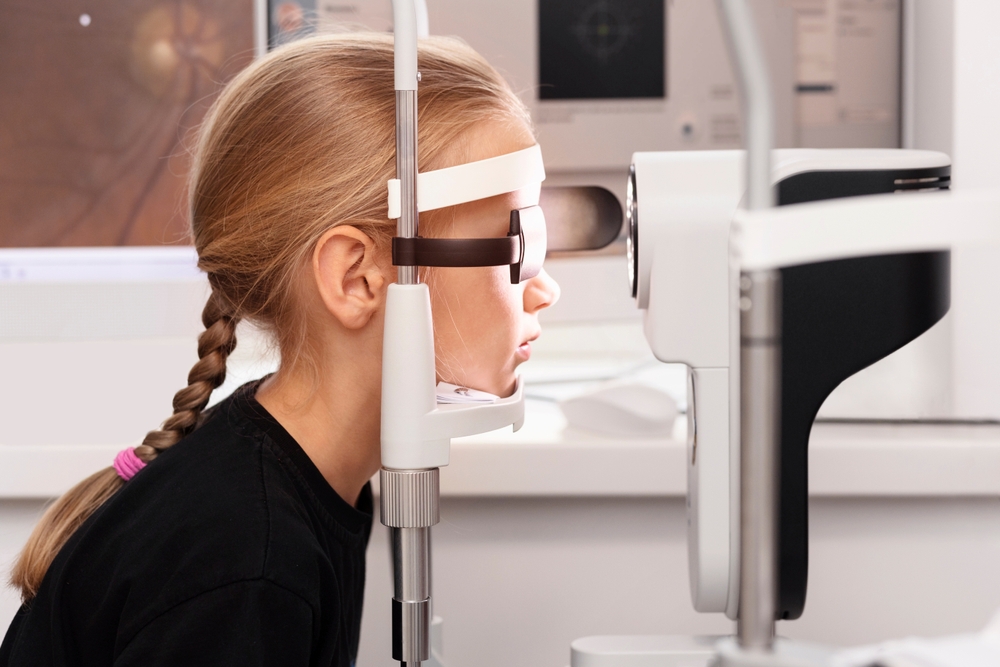
As children grow, their eyes change rapidly - and their vision plays a vital role in learning and development. Regular pediatric eye exams are essential for ensuring that your child can see clearly and comfortably, both in and out of the classroom. Many parents assume that school vision screenings are enough, but these basic tests only detect obvious vision problems and can miss more subtle or complex issues that affect academic performance and eye health.
The Link Between Vision and Learning
Clear vision is fundamental to a child’s ability to learn effectively. Experts estimate that up to 80% of classroom learning is visual. From reading and writing to recognizing shapes, colors, and distance, strong visual skills support nearly every aspect of academic performance. When a child struggles to see the board, focus on printed text, or track words while reading, it can lead to frustration, poor concentration, and falling behind in school. Even if a child appears to see “well enough,” undiagnosed vision problems like eye coordination issues or focusing difficulties can impact reading comprehension and attention.
Why Basic Vision Screenings Aren’t Enough
School or pediatrician vision screenings typically measure distance vision using an eye chart. While they can detect nearsightedness or farsightedness, they often fail to identify other important vision problems, such as:
• Eye coordination or focusing issues
• Depth perception problems
• Early signs of eye disease
• Visual processing difficulties
A comprehensive eye exam performed by an optometrist goes far beyond a simple vision check. It evaluates the overall health of the eyes, visual acuity, binocular vision, eye movement, and how the eyes work together - providing a complete picture of your child’s visual system.
The Importance of Pediatric Eye Exams
A thorough eye evaluation is critical for early detection of vision problems that can interfere with learning, sports performance, and confidence. Since many eye conditions develop without noticeable symptoms, routine exams help ensure issues are caught early - when treatment is most effective.
Some of the most common eye conditions in school-aged children include:
• Myopia (nearsightedness) - Difficulty seeing distant objects clearly
• Hyperopia (farsightedness) - Blurry vision when focusing on close-up tasks
• Astigmatism - Distorted or blurry vision at all distances
• Amblyopia (lazy eye) - Reduced vision in one eye caused by poor visual development
• Strabismus (eye misalignment) - When the eyes do not properly align or work together
Identifying and addressing these conditions early can make a lasting difference in your child’s academic and developmental success.
How Often Should Kids Have an Eye Exam?
For most school-aged children, eye exams should be scheduled annually unless otherwise recommended by our optometrist. Regular visits allow your eye doctor to track changes in vision and update prescriptions as needed.
Partner with Steel Optical for Expert Pediatric Eye Care
Vision plays a key role in your child’s ability to learn, play, and grow confidently. By scheduling regular comprehensive eye exams, you’re giving your child the best possible foundation for clear vision and success in school.
Schedule a pediatric eye exam at Steel Optical and ensure their vision is ready for every adventure. Visit our office in Eagan or Burnsville, Minnesota, Colorado Springs, Colorado, or Cranberry Township, Pennsylvania. Please call (612) 439-8075, (952) 229-6462, (719) 264-5023, or (724) 778-6306 to book an appointment today





